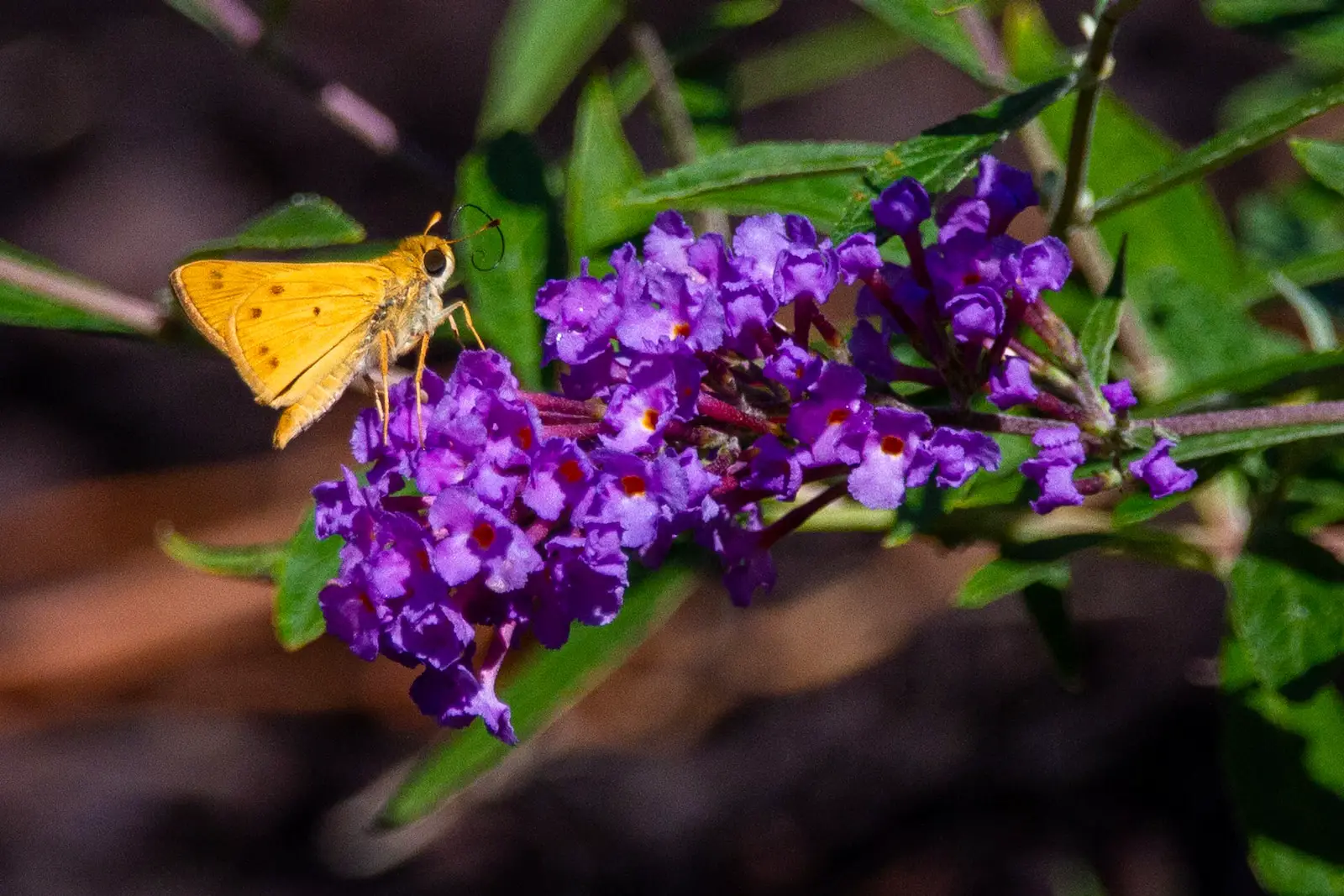The Butterfly Bush, aptly named for its ability to attract butterflies, is a magnificent shrub known for its long, elegant flower spikes. It’s a favored plant for butterfly gardens, as the nectar-rich flowers are irresistible to butterflies, hummingbirds, and other pollinators. The flowers bloom in a variety of colors including purple, blue, pink, and white, and their sweet fragrance adds another layer of charm to this attractive plant.
Native to East Asia, the Butterfly Bush (genus Buddleja) is part of the Scrophulariaceae family. It has been widely cultivated and can be found gracing gardens and landscapes around the world. Fast-growing and tolerant of various conditions, it’s often used for ornamental purposes, adding both color and vitality to outdoor spaces.
However, in some regions, the Butterfly Bush’s vigor is a double-edged sword. Its rapid growth and ability to self-seed have led to it being classified as an invasive species in some areas. This highlights the importance of responsible planting and maintenance to ensure that it doesn’t out-compete native vegetation.
| Attribute | Details |
|---|---|
| Common Names | Butterfly Bush |
| Botanical Name | Buddleja spp. |
| Family | Scrophulariaceae |
| Plant Type | Shrub |
| Mature Size | 6-12 feet high, 4-15 feet wide |
| Sun Exposure | Full sun |
| Soil Type | Well-drained soil |
| Hardiness Zones | 5-9 |
| Native Area | East Asia |
Butterfly Bush Care
Caring for the Butterfly Bush requires understanding its natural habits and preferences. Thriving in sunny locations, this shrub loves light and well-drained soil. Although it’s quite tolerant of different conditions, careful attention to its basic needs will result in a healthier, more attractive plant.
Regular pruning and proper spacing are essential for maintaining its shape and promoting vigorous flowering. Likewise, understanding its water, soil, and fertilization needs can make the difference between a thriving Butterfly Bush and one that struggles.
Light Requirement for Butterfly Bush
The Butterfly Bush thrives in full sun. A minimum of six to eight hours of direct sunlight per day is ideal for promoting lush growth and abundant flowering. While it can tolerate some shade, less sunlight often leads to fewer flowers and a leggier appearance.
Soil Requirements for Butterfly Bush
Well-drained soil is essential for healthy Butterfly Bush growth. The plant is quite adaptable and can grow in various soil types, including sandy, loamy, or clay soils, provided they drain well. Soil that remains soggy can lead to root rot and other problems.
Water Requirements for Butterfly Bush
While the Butterfly Bush is drought-tolerant once established, regular watering during the first growing season helps the plant develop a deep root system. After that, occasional deep watering in prolonged dry spells will suffice.
Temperature and Humidity
The Butterfly Bush is hardy in zones 5-9, meaning it can tolerate cold down to -20°F. It doesn’t have specific humidity requirements and generally adapts to the local climate.
Fertilizer
A general-purpose garden fertilizer applied in early spring can promote growth and flowering. Over-fertilizing should be avoided, as it may lead to excessive growth at the expense of blooms.
Pruning Butterfly Bush
Pruning is essential for maintaining the shape and encouraging flowering. Cutting back in late winter or early spring promotes new growth and helps prevent the plant from becoming too woody or unruly.
Propagating Butterfly Bush
The Butterfly Bush can be propagated through cuttings or division. Stem cuttings taken in early summer and rooted in a mixture of sand and peat moss can produce new plants.
How To Grow Butterfly Bush From Seed
Growing Butterfly Bush from seed is possible but can be challenging. The seeds need to be sown in a well-drained mix, kept moist, and provided with plenty of light. Germination may take several weeks.
Common Pests & Plant Diseases
Spider Mites
These tiny pests can be controlled with regular spraying of water or insecticidal soap.
Powdery Mildew
This fungal disease can be managed by proper spacing and pruning to improve airflow.
Common Problems With Butterfly Bush
Invasive Growth
In some regions, it may become invasive. Controlling self-seeding and planting in appropriate zones is essential.
Weak Flowering
Caused by insufficient sunlight or over-fertilization. Ensure adequate light and avoid excessive feeding.
Pro Tips
- Plant the Butterfly Bush in a location where you can enjoy the butterflies and hummingbirds it attracts.
- Consider local regulations and environmental considerations, as it may be invasive in some areas.
- Match the specific species or variety to your climate and garden size for the best results.
- Deadheading spent flowers can promote continuous blooming throughout the season.




